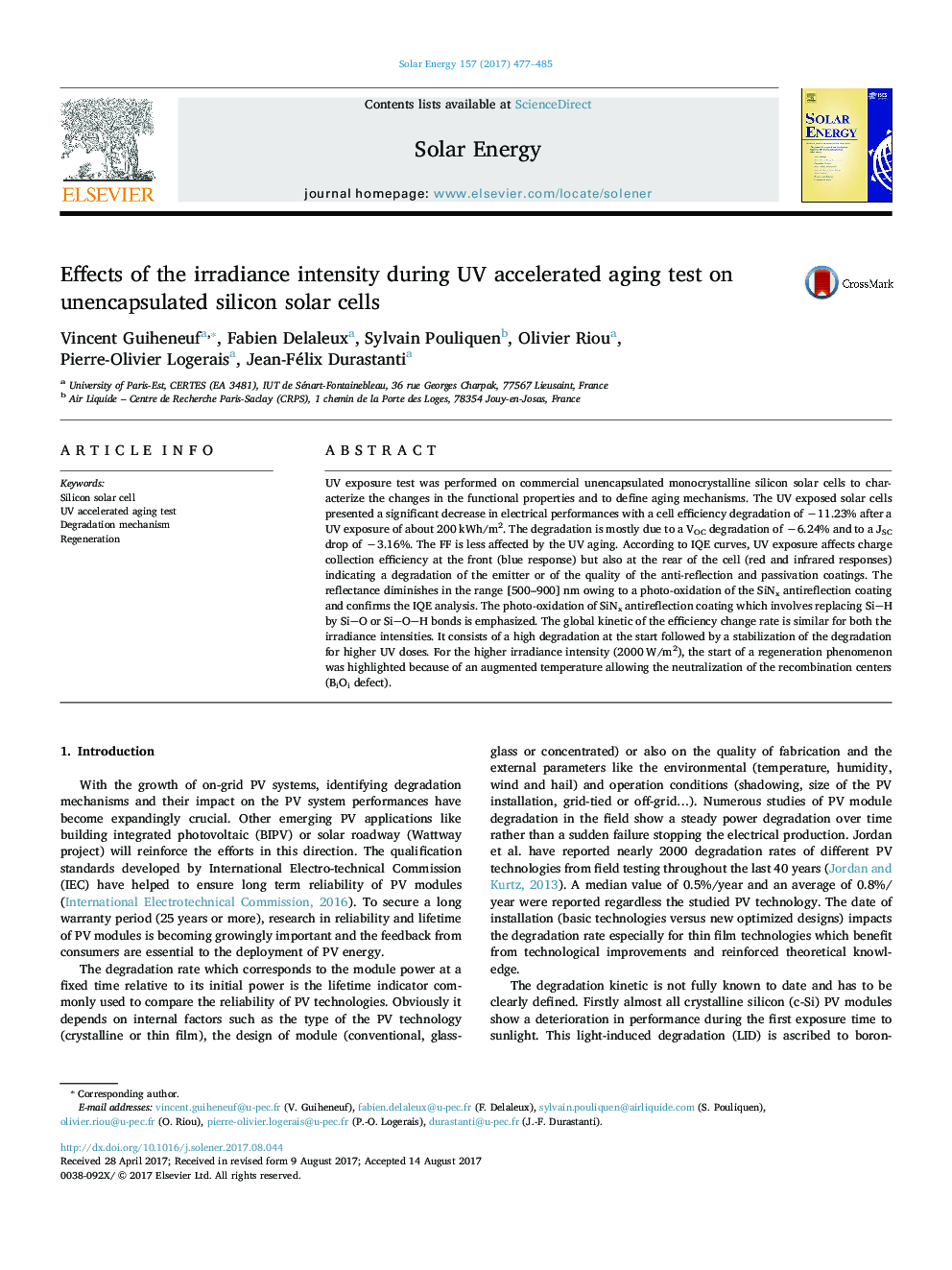| Article ID | Journal | Published Year | Pages | File Type |
|---|---|---|---|---|
| 5450890 | Solar Energy | 2017 | 9 Pages |
Abstract
UV exposure test was performed on commercial unencapsulated monocrystalline silicon solar cells to characterize the changes in the functional properties and to define aging mechanisms. The UV exposed solar cells presented a significant decrease in electrical performances with a cell efficiency degradation of â11.23% after a UV exposure of about 200Â kWh/m2. The degradation is mostly due to a VOC degradation of â6.24% and to a JSC drop of â3.16%. The FF is less affected by the UV aging. According to IQE curves, UV exposure affects charge collection efficiency at the front (blue response) but also at the rear of the cell (red and infrared responses) indicating a degradation of the emitter or of the quality of the anti-reflection and passivation coatings. The reflectance diminishes in the range [500-900]Â nm owing to a photo-oxidation of the SiNx antireflection coating and confirms the IQE analysis. The photo-oxidation of SiNx antireflection coating which involves replacing SiH by SiO or SiOH bonds is emphasized. The global kinetic of the efficiency change rate is similar for both the irradiance intensities. It consists of a high degradation at the start followed by a stabilization of the degradation for higher UV doses. For the higher irradiance intensity (2000Â W/m2), the start of a regeneration phenomenon was highlighted because of an augmented temperature allowing the neutralization of the recombination centers (BiOi defect).
Related Topics
Physical Sciences and Engineering
Energy
Renewable Energy, Sustainability and the Environment
Authors
Vincent Guiheneuf, Fabien Delaleux, Sylvain Pouliquen, Olivier Riou, Pierre-Olivier Logerais, Jean-Félix Durastanti,
